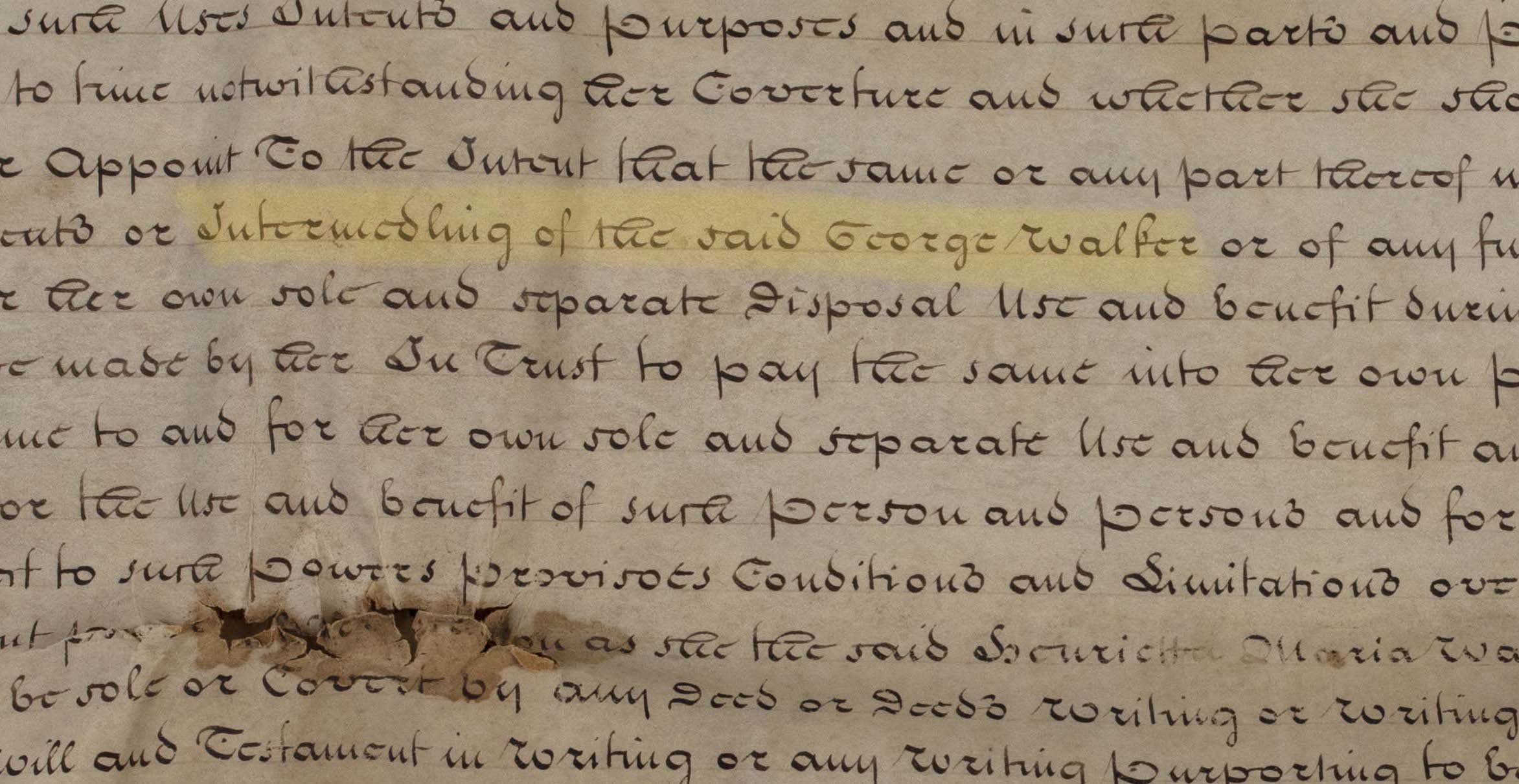As I have delved deeper into the content and context of the Hungerford Deed, a property contract dividing up inherited family lands between the mother and aunt of James Smithson, I have continually been drawn to learning more about the two women. The Deed is just one recorded example of the way that Elizabeth Macie, Smithson’s mother, and her sister, Henrietta Maria Walker, navigated their male-dominated world.
Setting aside the fact that a real and disadvantaging gender gap persists today, I found that my preconceptions about women’s rights in the eighteenth century were contradicted by what I discovered within the Deed’s text. When Henrietta Maria got married, the conditions of her marriage contract guaranteed that her property would be for her “sole and separate Use and benefit” and free from the “intermedling" or interference of her husband. To be honest, this shocked me. I’d assumed that women in the 1760s couldn’t legally have rights like this—especially if they were married.

Were there other misunderstandings like this that might be corrected as I dug into the Deed? What could Macie and Walker’s experiences tell us about the status of women’s property rights in eighteenth-century England?
This major misconception I had about women’s rights to property in this period—that married women had no control over their possessions, with no exceptions—was, to be fair, not totally off-base. In England at this time, and in most English-speaking common law countries, a woman’s belongings became legal property of her husband, including any real estate she might bring to the marriage. Under this concept of coverture, a husband could do whatever he pleased with his wife’s property—sell it, destroy it, use it as collateral for a loan, even gamble it away—without having to consult her. This was the state of affairs in England until a series of laws were passed, beginning in 1870, that restored control of personal assets to married women. In the U.S., this began earlier, when New York State passed similar laws in 1848.
However, some protections gave women greater control over their own property before this time. It was not uncommon, according to historian and property deed expert Nat Alcock, for a woman’s land to be placed into a trust for her benefit alone. This would be managed by trustees under specific instructions; in this case, it was to manage the real estate and pay the owner any income arising from her land. The Hungerford Deed reveals that this was the case when Henrietta Maria married her husband, George Walker. Again, the trust stipulated that not only was the income from the land for Henrietta Maria alone, but that her husband was not to interfere in any way. Trusts like this one could have been put in place for any number of reasons—to keep family properties intact that have been passed down through a mother, to prevent a gold-digging husband from frittering away family wealth—but they afforded these married women greater control and autonomy than other women’s marriage contracts did.
This isn’t to say that Walker would have been free from all of the legal restrictions that marriage or her gender imposed on her. Her sister, Macie, was unmarried for most of the period that the Hungerford Deed covers, and therefore had a slightly greater degree of control over what she owned outright. But she clearly felt the disadvantaged status of women, as Heather Ewing, James Smithson’s biographer, illuminated in her research. Walker may have agreed with her sister that “womens estates are so neglected & constantly incroached on,” even though she enjoyed more control over her affairs than the average married woman might.

This curtailing of women’s rights that Macie lamented remains present in our society—and it is mirrored by our limited awareness of the stories of these women. The Deed, in tandem with Ewing’s biography of Smithson, shows us how the largely-forgotten lives of Macie and Walker may have influenced James Smithson and his choice to will his fortune to create the Smithsonian. Their drive, independent thinking, and personal passion were examples he could look to as he charted his own course. In elevating the stories of women, and their important contributions to knowledge, to society, and to humanity, the Smithsonian aims to tell a more complete history.
Women’s history is our history.
Related Resources
- “A Tale of Three Contracts,” by William Bennett, The Bigger Picture, Smithsonian Institution Archives
- “Tracing Inheritance in the Hungerford Deed,” by William Bennett, The Bigger Picture, Smithsonian Institution Archives
- “‘To Have and to Hold’: Parsing the Legal Framework of the Hungerford Deed,” by William Bennett, The Bigger Picture, Smithsonian Institution Archives
Produced by the Smithsonian Institution Archives. For copyright questions, please see the Terms of Use.

Leave a Comment